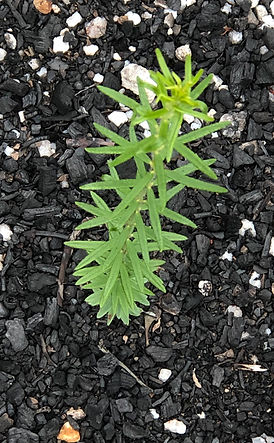
How do plants recover after fire?
Aussie plant species have two main ways to recover after a fire.
Some plants are able to survive fire. They may look completely dead straight after a burn, but very soon they send out new shoots. Species that recover in this way are called ‘resprouters’.

Pink Bloodwood (Corymbia intermedia), Border Ranges
Photos:
A eucalypt resprouting from its trunk 6 weeks after fire.
A shrub resprouting from its base, 13 months post-fire. You can see the old dead stem.
A trio of resprouters. Resprouting plants often have multiple stems arising from ground level.

Conesticks (Petrophile canescens), Girraween

L to R: Trailing Hovea (Hovea heterophylla), Blue Dampiera (Dampiera stricta) and a pea (Aotus subglauca), Girraween, 13 months post-fire.
In other species, the adult plants really are killed by fire. They're called 'obligate seeders', because they have no choice but to grow from seed. Often they have seed stored in the soil, poised to germinate into the benign post-fire conditions.
Obligate seeders generally produce more seed than resprouters, and their seedlings grow more rapidly. When you see seedlings coming up in the bush after a fire followed by good rain, almost all of them will be of obligate seeder species.

White Everlasting (Ozothamnus diosmifolius), Girraween, 13 months post-fire

Native Sarsaparilla (Hardenbergia violacea), Sydney, 5 months post-fire
These photos show seedlings emerging after fire.
You can sometimes distinguish seedlings from resprouts in the early post-fire environment by their ‘seed leaves’ (cotyledons) – they are clearly visible in the Hardenbergia seedling above. They soon drop off as seedlings grow.

Snow Bush (Leucopogon melalucoides), Girraween, 11 months post-fire. Photo by Grant Wardell-Johnson
Although resprouting might seem like the safe way to go, obligate seeding species have the potential to turn one plant into many, each time there is a fire - IF the interval between fires is right.
Resprouters need some way to increase population numbers to make up for plants that die out, though they may not need to do it very often, or to any great extent. Some produce occasional seedlings, others create new plants by sending up shoots from underground roots, away from the original plant.